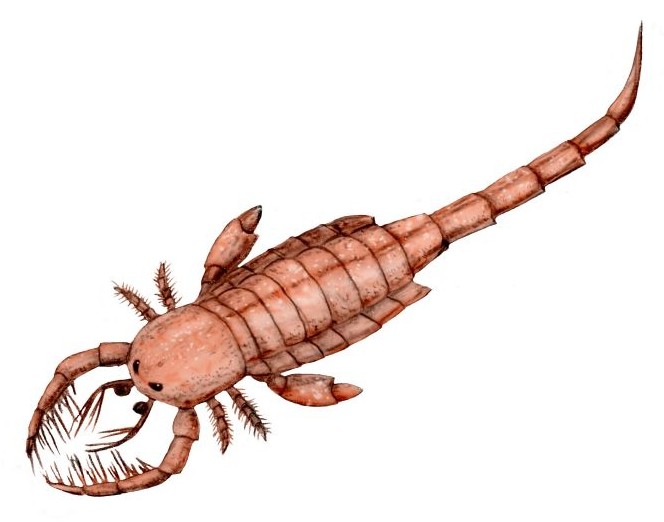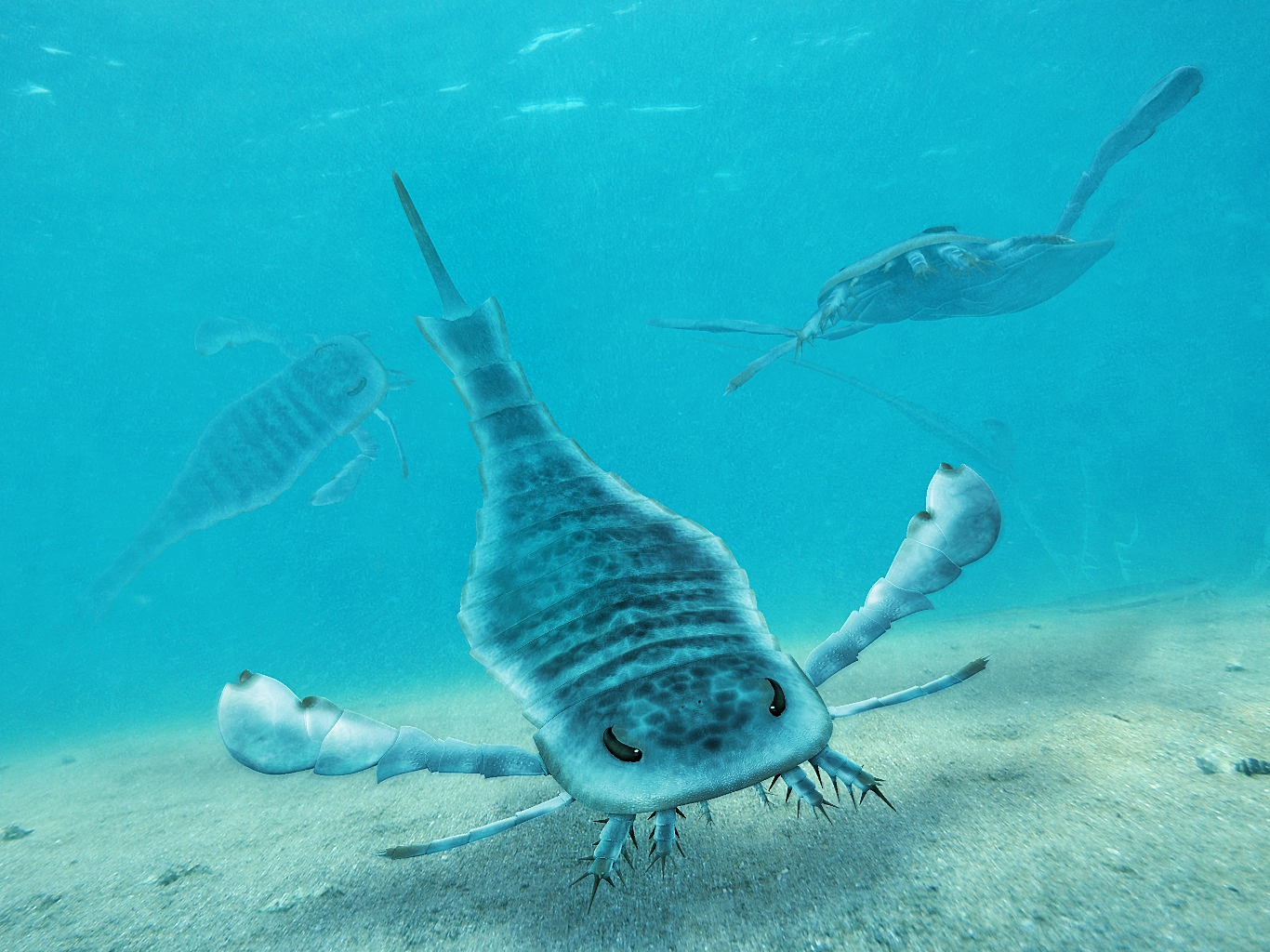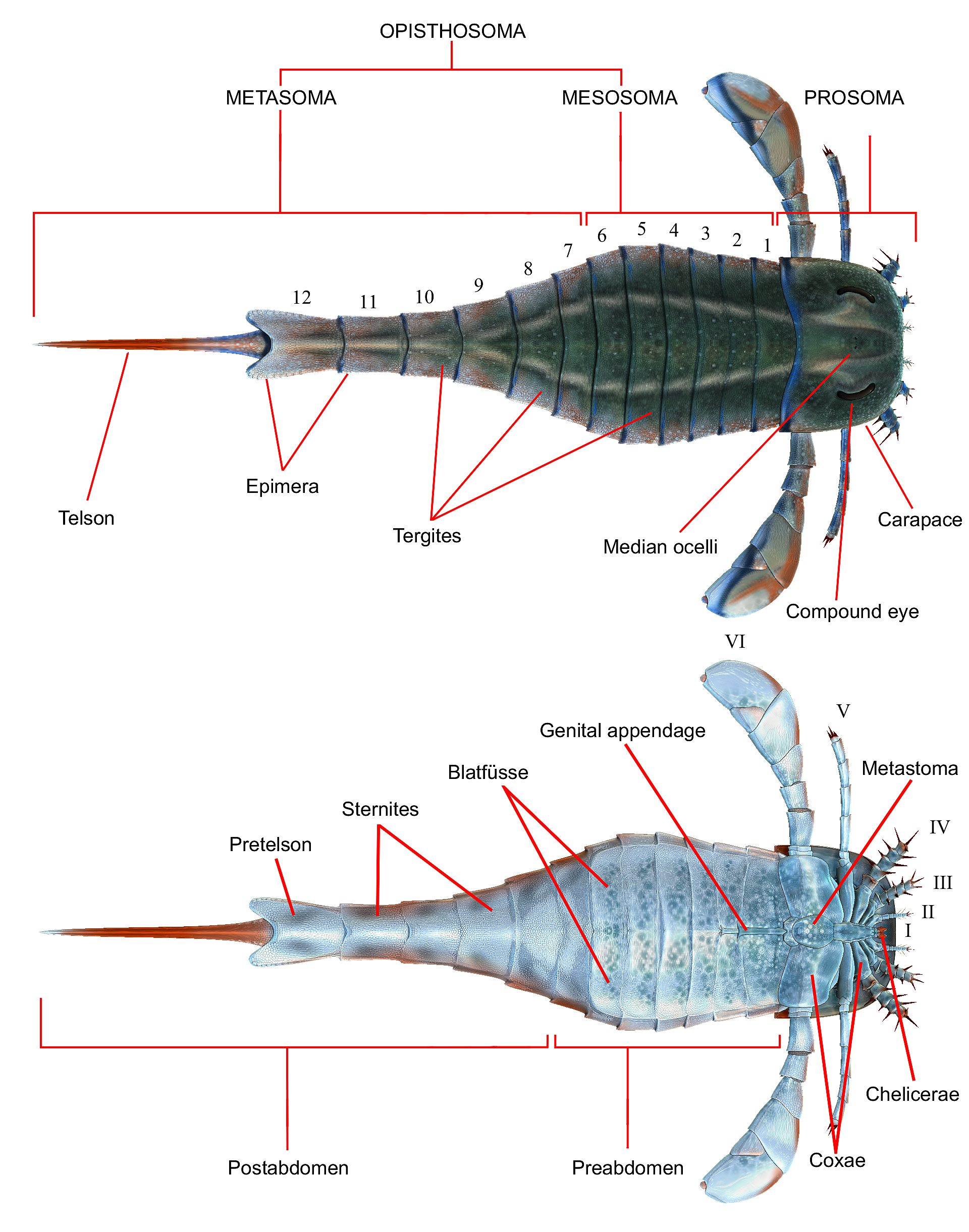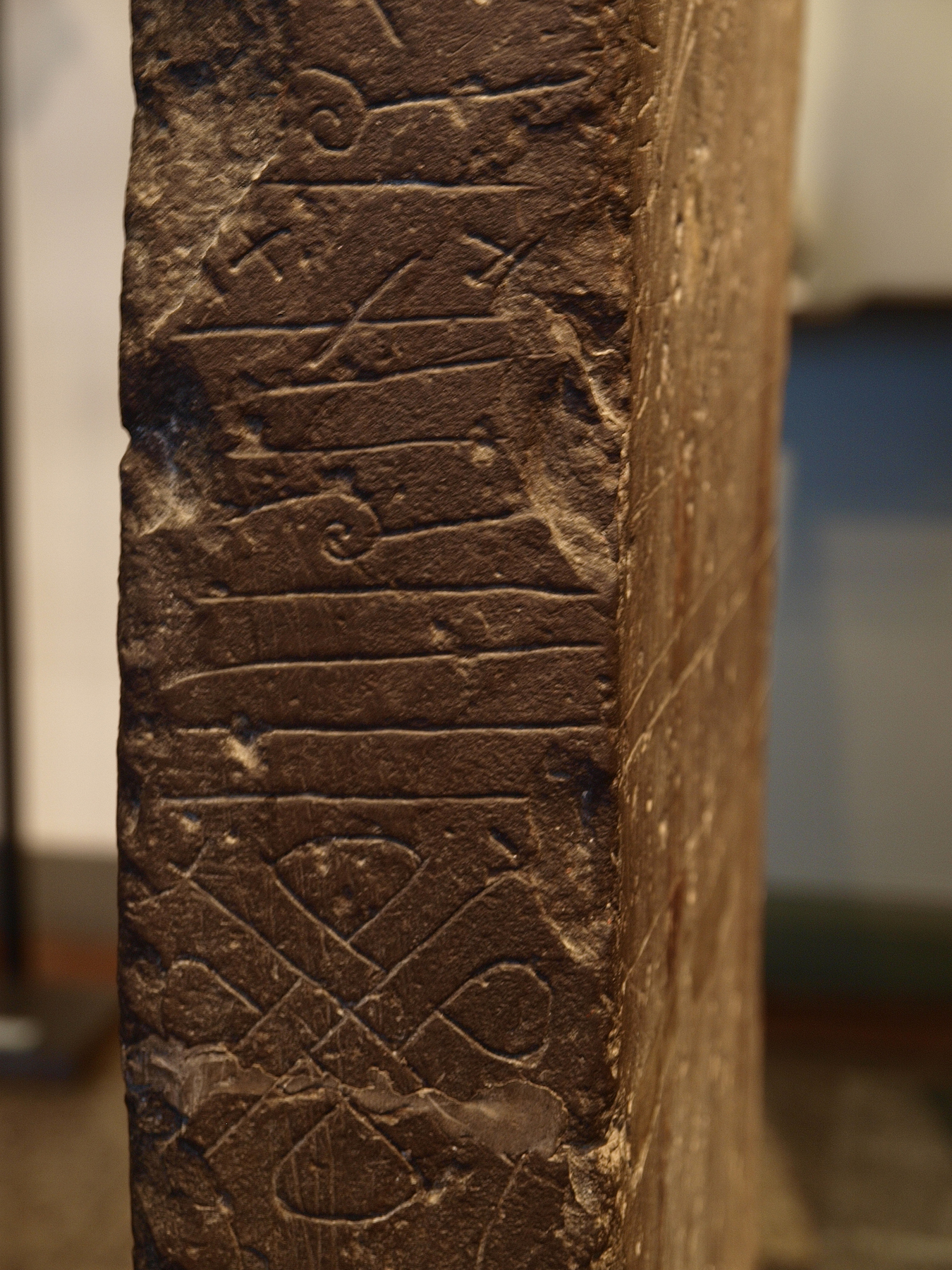|
Mixopterus
''Mixopterus'' is a genus of eurypterid, an extinct group of aquatic arthropods. Fossils of ''Mixopterus'' have been discovered in deposits from Late Silurian age, and have been referred to several different species. Fossils have been recovered from two continents; Europe and North America.Dunlop, J. A., Penney, D. & Jekel, D. 2015. A summary list of fossil spiders and their relatives. In World Spider Catalog. Natural History Museum Bern, online at http://wsc.nmbe.ch , version 18.5 http://www.wsc.nmbe.ch/resources/fossils/Fossils18.5.pdf (PDF). Description ''Mixopterus'' was a medium-sized predatory eurypterid. The largest species, ''M. simonsoni'', reached lengths of 75 cm (29.5 in). It was characterised by a robust exoskeleton with scattered tubercles or semicircular scales. The prosoma (head) was subquadrate, protruding antemedially. The chelicerae (claws in front of the mouth) were small. The two first pairs of legs of ''Mixopterus'' (appendages II and III) were highly speci ... [...More Info...] [...Related Items...] OR: [Wikipedia] [Google] [Baidu] |
Lanarkopterus
''Lanarkopterus'' is a genus of prehistoric eurypterid with one recognised species, ''Lanarkopterus dolichoschelus''. ''Lanarkopterus'' was long seen as a species of the closely related '' Mixopterus'', though more complete specimens discovered in the 1960s determined that it differed in several aspects, enough to warrant a separate genus. Specimens of the genus have been recovered from deposits of Late Silurian age in Scotland. Description ''Lanarkopterus'' was a small to moderately large (ranging in size from less than 10 centimeters to over 30 centimeters) mixopterid eurypterid that like its close relative '' Mixopterus'' appeared almost scorpion-like with a broad and trilobed preabdomen, a narrow and tapering postabdomen and a sharped and curved telsonic spine. History of discovery Specimens of ''Lanarkopterus'' were first noted by Peach and Horne (1899) in the Ludlowian fish beds of the Lesmahagow and Hagshaw Hills Silurian inliers in Ayrshire and Lanarkshire, Scotlan ... [...More Info...] [...Related Items...] OR: [Wikipedia] [Google] [Baidu] |
List Of Eurypterid Genera
This list of eurypterid genera is a comprehensive listing of all genera that have ever been included in the order Eurypterida, excluding purely vernacular terms. The list includes all commonly accepted genera, but also genera that are now considered invalid, doubtful (''nomen dubium''), or were not formally published (''nomen nudum''), as well as junior synonyms of more established names and genera that are no longer considered eurypterids. The list currently includes 115 names out of which 74 are considered valid eurypterid genera. There are approximately 250 species of eurypterids recognized as valid. Naming conventions and terminology There is no "official" or "canonical" list of eurypterid genera. The closest thing is found contained in the regularly updated ''Summary list'' ''of fossil spiders and their relatives'' in the World Spider Catalog. The vast majority of the content of the list below, including the valid genera, preoccupied names, junior synonyms, taxonomical clas ... [...More Info...] [...Related Items...] OR: [Wikipedia] [Google] [Baidu] |
Eurypterina
Eurypterina is one of two suborders of eurypterids, an extinct group of chelicerate arthropods commonly known as "sea scorpions". Eurypterine eurypterids are sometimes informally known as "swimming eurypterids". They are known from fossil deposits worldwide, though primarily in North America and Europe. Seventy-five percent of eurypterid species are eurypterines; this represents 99% of specimens. The superfamily Pterygotioidea is the most species-rich clade, with 56 species, followed by the Adelophthalmoidea with 43 species; as sister taxa, they comprise the most derived eurypterines. Pterygotioidea includes the pterygotids, which are the only eurypterids known to have a cosmopolitan distribution. Though more numerous both in specimens and taxa, the eurypterines have the shorter temporal range of the two eurypterid suborders. They first appeared around the same time as the Stylonurina in the Middle Ordovician. The suborder faced a slow extinction during the Middle and Lat ... [...More Info...] [...Related Items...] OR: [Wikipedia] [Google] [Baidu] |
Carcinosomatoidea
Carcinosomatoidea is an extinct superfamily of eurypterids, an extinct group of chelicerate arthropods commonly known as "sea scorpions". It is one of the superfamilies classified as part of the suborder Eurypterina. Some carcinosomatoid genera have been suggested to have been fully marine as opposed to living in near-shore brackish or hypersaline environments. The majority of carcinosomatoid taxa are known from the paleocontinents of Laurentia, Baltica and Avalonia. Isolated and fragmentary fossils from the Late Silurian of Vietnam and the Czech Republic show that the terranes of Annamia and Perunica were within the geographical range of the carcinosomatoids. Only a few basal carcinosomatoids (e.g. '' Carcinosoma'' and '' Paracarcinosoma'') have been found in deeper waters whilst the more derived forms, such as ''Mixopterus'' and ''Lanarkopterus'' have not. Basal carcinosomatoids ( Carcinosomatidae) are likely responsible for the fossil remains in Vietnam and the Czech Republ ... [...More Info...] [...Related Items...] OR: [Wikipedia] [Google] [Baidu] |
Eurypterid
Eurypterids, often informally called sea scorpions, are a group of extinct marine arthropods that form the Order (biology), order Eurypterida. The earliest known eurypterids date to the Darriwilian stage of the Ordovician period, 467.3 Myr, million years ago. The group is likely to have appeared first either during the Early Ordovician or Late Cambrian period. With approximately 250 species, the Eurypterida is the most diverse Paleozoic Chelicerata, chelicerate order. Following their appearance during the Ordovician, eurypterids became major components of marine faunas during the Silurian, from which the majority of eurypterid species have been described. The Silurian genus ''Eurypterus'' accounts for more than 90% of all known eurypterid specimens. Though the group continued to diversify during the subsequent Devonian period, the eurypterids were heavily affected by the Late Devonian extinction event. They declined in numbers and diversity until becoming extinct during the Permi ... [...More Info...] [...Related Items...] OR: [Wikipedia] [Google] [Baidu] |
Erettopterus
''Erettopterus'' is a genus of large predatory eurypterid, an extinct group of aquatic arthropods. Fossils of ''Erettopterus'' have been discovered in deposits ranging from Early Silurian (the Rhuddanian age) to the Early Devonian (the Lochkovian age), and have been referred to several different species. Fossils have been recovered from two continents; Europe and North America. The genus name is composed by the Ancient Greek words ἐρέττω (''eréttō''), which means "rower", and πτερόν (''pterón''), which means "wing", and therefore, "rower wing". ''Erettopterus'' is classified as part of the eurypterid family Pterygotidae, a family differentiated from other eurypterids by their flattened telsons (the most posterior segment of the body) and their modified chelicerae (frontal appendages), ending in well-developed chelae (claws). Although some pterygotid eurypterids, such as ''Jaekelopterus'' or ''Acutiramus'' grew to gigantic proportions, it is estimated that the la ... [...More Info...] [...Related Items...] OR: [Wikipedia] [Google] [Baidu] |
Merostomichnites
''Merostomichnites'' is an ichnofossil genus, interpreted as a eurypterid trace. Traces produced by this large eurypterid were described from the Silurian and Lower Ordovician, and has been found in Portugal and Norway. The eurypterid trail was found by Hanken and Dr. J. Miller in 1971. The tracks found in Norway were likely made by '' Mixopterus kiaeri''.Hanken, N.-M. & Størmer, L. (1975):The trail of a large Silurian eurypterid. ''Fossils and Strata'', No. 4, pp. 255-270, Pl. 1 -3. See also * List of eurypterid genera This list of eurypterid genera is a comprehensive listing of all genera that have ever been included in the order Eurypterida, excluding purely vernacular terms. The list includes all commonly accepted genera, but also genera that are now consider ... References Eurypterida Fossil trackways {{trace-fossil-stub ... [...More Info...] [...Related Items...] OR: [Wikipedia] [Google] [Baidu] |
Norway
Norway, officially the Kingdom of Norway, is a Nordic countries, Nordic country located on the Scandinavian Peninsula in Northern Europe. The remote Arctic island of Jan Mayen and the archipelago of Svalbard also form part of the Kingdom of Norway. Bouvet Island, located in the Subantarctic, is a Dependencies of Norway, dependency, and not a part of the Kingdom; Norway also Territorial claims in Antarctica, claims the Antarctic territories of Peter I Island and Queen Maud Land. Norway has a population of 5.6 million. Its capital and largest city is Oslo. The country has a total area of . The country shares a long eastern border with Sweden, and is bordered by Finland and Russia to the northeast. Norway has an extensive coastline facing the Skagerrak strait, the North Atlantic Ocean, and the Barents Sea. The unified kingdom of Norway was established in 872 as a merger of Petty kingdoms of Norway, petty kingdoms and has existed continuously for years. From 1537 to 1814, Norway ... [...More Info...] [...Related Items...] OR: [Wikipedia] [Google] [Baidu] |
Ringerike (traditional District)
Ringerike is a traditional district in Norway, commonly consisting of the municipalities Hole, Norway, Hole and Ringerike (municipality), Ringerike in Buskerud county. In older times, Ringerike had a larger range which went westward to the municipalities Krødsherad, Modum, and Sigdal, also in Buskerud. Ringerike has a rich history that is connected with one of the most notable kings in the history of Norway, the father of King Harald Fairhair Halfdan the Black, who subdued Gandalf Alfgeirsson, King of Alfheim and half of Vingulmork, and the Dagling clan. Gandalf was possibly the last king of Ringerike, whose name is given to the eponymous King Hring, son of Raum the Old (cf. Romerike), son of Nór (the eponymous ancestor of Norwegians), according to the Sagas of the ancient Northernlands, better known as the ''Orkneyinga saga''. It is possible that this, as the name suggests, was the legendary heartland of the House of Sigurd Hring and Ivar the Wide-Fathoming. There are also many ... [...More Info...] [...Related Items...] OR: [Wikipedia] [Google] [Baidu] |






